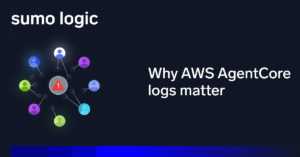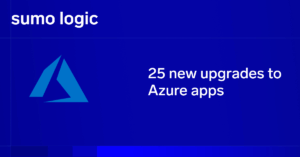
Cybercrime costs are expected to increase by $6.4 trillion every year until 2029. But as any seasoned security practitioner knows, the damage goes far deeper than financial loss. Downtime, reputational harm, legal fallout, and broken trust are often the real costs.
Organizations can’t afford to treat log management as a check box. A strong log management and log analytics strategy is essential to modern cybersecurity. You can spot threats sooner and recover faster by giving your team real-time visibility into applications, systems, and security events. Learn how integrating security into your broader log management process can help your team stay ahead of security and reliability issues before they escalate.
What is log management in cybersecurity?
Log management is the process of collecting, aggregating, analyzing, and storing log data, often from disparate sources into a single system. A log management system helps organizations centralize this log data and make it actionable.
Another critical component of log management is log analytics, which analyzes log data to extract valuable insights and generate information to improve organizational efficiencies, empower troubleshooting, and monitor system health and performance.
Security Operations (SecOps) and DevOps teams can use log file details to monitor activities within their technology stack, identify potential policy violations, and watch for suspicious or fraudulent activity through log monitoring.
Yet, these tasks aren’t easy with the hundreds of terabytes of log files across disparate systems that many enterprise organizations have. Your organization needs to implement an effective, end-to-end log management system like Sumo Logic that’ll empower your DevSecOps team to collect, monitor, and analyze all of their logs in one place.
Why security teams must care about DevOps
The DevOps team owns the modern attack surface. From infrastructure-as-code to ephemeral containers, the assets that security must protect are being built and shipped continuously. And often, vulnerabilities are introduced long before runtime.
That’s why security practitioners can’t afford to stand on the sidelines. Instead, they need to embed themselves into DevOps workflows and use log data to uncover potential threats by:
- Monitoring continuous integration/continuous delivery (CI/CD) pipelines for misconfigurations and secrets using log analysis
- Tracking deployment activity for anomalies through centralized log collection and log monitoring
- Detecting shifts in cloud configurations
- Integrating static code analysis and runtime security controls
Security becomes a quality issue. And the logs? They’re where DevOps and SecOps meet to get valuable insights, troubleshoot performance issues, and get answers.
What’s in a security log?
To be effective, security logs should capture:
- Time-stamped, normalized events
- User and device identities
- IP addresses, protocols, and geolocation
- Authentication attempts, privilege escalations, and resource access
- System changes, service starts, registry edits, log file updates, and executable launches
Types of logs to track include:
- Failed logins and brute-force attempts
- Changes to user roles or permissions
- Unexpected system resource spikes that may indicate performance issues
- File integrity changes
- Malware alerts
- USB and device access
- Service and application installs
- API calls and cloud activity
- Denial of Service (DoS) indicators
Why log management matters for security
Security log management gives you:
- Enterprise-wide visibility: With an end-to-end log management system like Sumo Logic, your organization can aggregate log data into a single source of truth across on-prem, cloud, and hybrid environments. Log management tools empower SecOps teams to perform log analysis, develop threat detection alerts, and share findings.
- Faster threat detection and response: Correlate events in real time and pivot fast when seconds matter. With security logs, you can investigate the root cause of issues to respond to events and recover as quickly as possible.
- Adherence to security logging best practices: Implementing log management best practices is crucial. For example, the Center for Internet Security (CIS) includes audit log management in its 18 CIS Critical Security Controls, emphasizing its role in detecting, understanding, and recovering from an attack. Similarly, NIST outlines log management best practices for infrastructure, planning, and operational processes.
- Audit readiness: Stay compliant with various logging and security requirements, as laid out in standards like PCI DSS, HIPAA, ISO 27001, FedRAMP™, and more. With the right log management solution, you can simplify audit preparation and data access.
- DevSecOps alignment: Create shared dashboards and workflows with DevOps to troubleshoot issues that cross both security and reliability boundaries.
Why Sumo Logic?
Sumo Logic was built for this moment. It’s a cloud-native SaaS platform designed to handle the scale, speed, and complexity of modern environments, without the cost or friction of legacy SIEMs or the blind spots of single-vendor XDRs.
With Sumo Logic, your team can:
- Centralize logs from every layer of your stack, such as infra, app, cloud, or code.
- Run advanced security analytics and UEBA to detect patterns others miss.
- Correlate security with DevOps telemetry for deeper context and root cause.
- Create and tune alerts to reduce false positives and noise.
- Benchmark against industry baselines with Global Intelligence Service.
- Stay compliant with SOC 2 Type 2, PCI-DSS, HIPAA, and FedRAMP™ Moderate.
Try Sumo Logic for yourself
Log management is your early warning system, detection toolkit, and bridge to DevOps. It’s how your security team moves faster, investigates smarter, and responds confidently.Want to turn your log data into clarity from chaos? Start now with our free 30-day trial.




